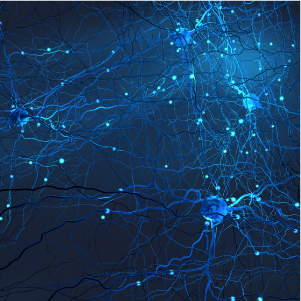Rheumatoid arthritis (RA) is a chronic (life-long) autoimmune disease in which inflammation causes pain, swelling, stiffness, and loss of function in joints. Joints in the hands, feet, wrists, elbows, knees, and ankles are affected on both sides of the body. Onset usually occurs between the ages of 35 to 60 years. And while it can be diagnosed in young children too (juvenile RA), diagnostic methods are slightly different than those for adults. It is prevalent in about 0.5 – 1% of the population and is more commonly diagnosed in women. RA patients can have progressive disability, systemic complications, and greater socioeconomic costs as compared with the general population.
Comorbidities are conditions that exist or may occur in a patient who has been diagnosed with a certain condition. In certain cases, they can worsen patient outcomes. Patients with RA can have comorbidities including:
- Cardiovascular disease
- Infections
- Cancer
- Lung diseases
- Neuropsychiatric disease
- Chronic kidney disease
Risk factors for developing RA include:
- Genetics – Having certain genes may increase your risk of developing autoimmune conditions such as RA. The specific gene for RA is called HLA (human leukocyte antigen) class II genotype. It’s important to remember that not everyone who has this gene will develop RA and not everyone with RA has this gene
- Certain bacteria and viruses
- Environment exposures including smoking, air pollutants, and occupational exposures
- Obesity
Interestingly, successfully having a live birth and breastfeeding are protective and decrease your chances of developing RA. RA is considered to be an autoimmune disease because the immune system mistakenly attacks healthy joint tissue. As a result, inflammation occurs in the joint membrane called the synovium. The tissue swells and every movement of the affected joints becomes painful. This uncontrolled inflammation can lead to cartilage and bone erosion, loss of motion, and irreversible joint damage to many affected body parts. You can read more about this intricate immune process here.
Signs and symptoms of RA include:
- Symmetrical pain or stiffness in multiple joints
- Tenderness and swelling in multiple joints
- Joint deformity
- Weight loss
- Fever
- Fatigue or weakness
Early diagnosis by a rheumatology specialist is considered to be critical in disease prognosis. This is because joint damage is irreversible and rather quick. Ideally, a diagnosis within the first six months of symptom onset is preferred and immediate treatment should follow. Poorly controlled or severe disease can cause non-specific symptoms to develop and can affect the heart, eyes, skin, lungs, and blood vessels.
While rheumatoid arthritis is a chronic autoimmune disease, goals of treatment include pain management and disease remission. Treatment options include:
- Non-steroidal anti-inflammatory drugs (NSAIDs) which are used for pain
- Corticosteroids which are used for pain and inflammation
- Disease-modifying antirheumatic drugs (DMARDs), this class of medications has become the first line choice of treatment. They are used to treat RA symptoms and slow and/or halt disease progression. In addition to this they are typically cost effective and have favorable side effect profiles.
- Biological DMARDS
- Small-molecule DMARDs
- JAK Inhibitors
- Physical and or chiropractic therapy
Research and Future Therapies
Ongoing research within the rheumatoid arthritis space has led us towards targeted gene therapies. This type of treatment uses the idea of precision medicine to create individualized treatments for patients. It hopes to treat disease at the root by targeting the very genes which cause them. It sounds incredibly promising and hopeful. More research and development is required to assess safety and effectiveness of these novel therapies.
In the meantime, if you or a loved one have been diagnosed with rheumatoid arthritis, remember that many resources for support are available through your healthcare providers. If you are able, consider joining a RA support group or getting involved in research by participating in clinical trials.
By Nadia Bhatti


